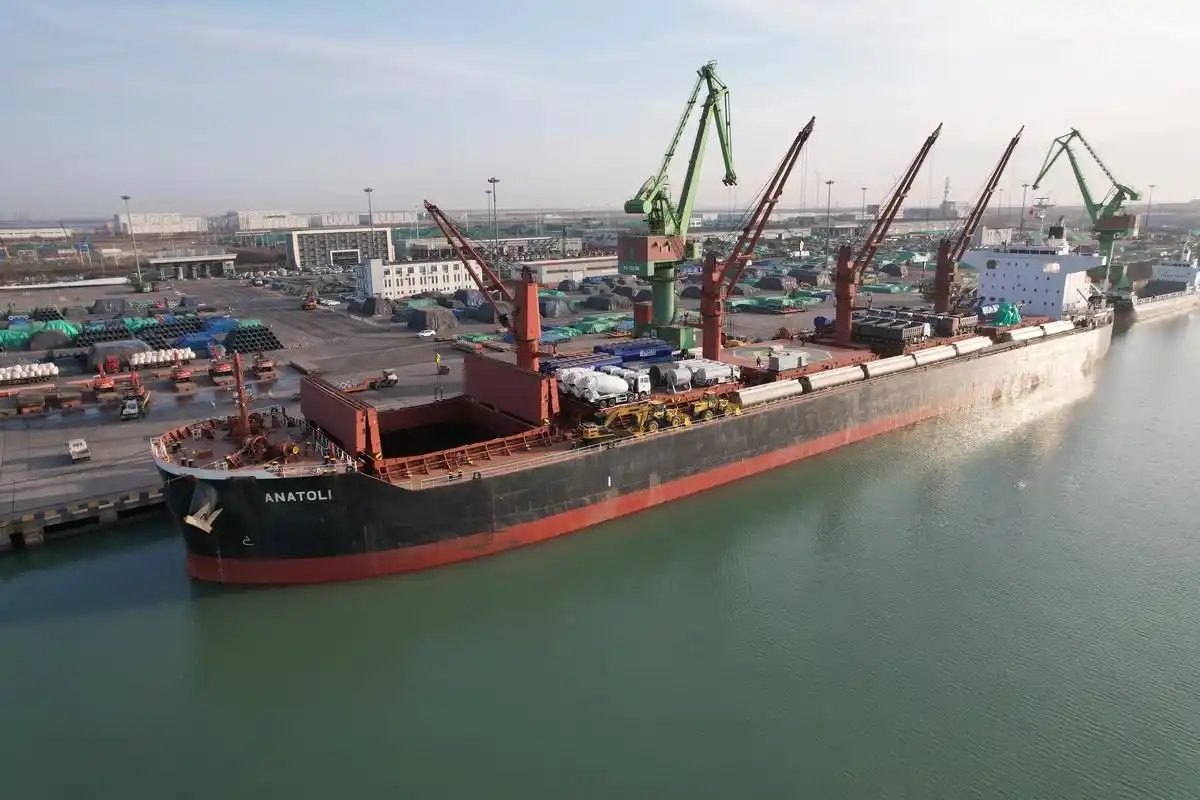The world's first China Europe Arctic Express has successfully completed its maiden voyage

In mid October 2025, when the "Istanbul Bridge" ship slowly docked at the Port of Frixstowe in the UK, the world's first China Europe Arctic container fast shipping route completed its historic maiden voyage. This giant ship, carrying over 1000 TEUs, departed from Zhoushan Port in Ningbo and sailed north via the Arctic Northeast Passage, arriving in Europe in just 20 days - a full 22 days shorter than the traditional Suez Canal route and nearly a month shorter than the detour to Cape of Good Hope route.
This route, which connects domestic hub ports such as Qingdao, Shanghai, and Ningbo, and provides direct access to core European ports such as the UK, the Netherlands, Germany, and Poland, is redefining the speed benchmark of China Europe logistics with a "18 day fast direct" delivery time. For cross-border service providers like Zhejiang Yinghe International Logistics, the timeliness revolution brings about tangible cost optimization: "In the past, the cost of a single container on the China Europe freight train was about $7000, but now using the Arctic Express can save 40%, and inventory turnover can be accelerated by nearly half." Warehouse supervisor Zhang Guanghui's emotion reflects the industry's voice.
Reducing costs and carbon emissions: the "dual gospel" of cross-border e-commerce
In the competitive logic of cross-border e-commerce, logistics efficiency and cost directly determine market competitiveness, and China Europe Arctic Express precisely hits these two pain points. Li Xiaobin, Chief Operating Officer of Haijie Shipping, calculated that with the advantage of an 18 day delivery time, the company's inventory can be reduced by 40%, the cost of capital occupation can be significantly reduced, and the supply chain response speed can be improved by nearly three times. More importantly, this route naturally possesses a "low-carbon gene" - due to the shortened route, its carbon emissions are reduced by 30% compared to the Suez route and 50% compared to the Cape of Good Hope route, perfectly meeting the green transformation needs of global trade.
For industries such as new energy and high-end manufacturing, the low-temperature environment of air routes has become a unique advantage. Zhou Chujing, the logistics procurement manager of Sige New Energy, revealed that the company's lithium battery energy storage cabinets have strict temperature requirements for transportation. The natural low temperature environment of the Arctic route not only saves additional temperature control costs, but also improves the safety of cargo transportation. "In the past, we had to worry about high temperature losses when traveling through the Suez Canal, but now it takes 18 days for direct delivery, and quality control is much more precise. In the first flight cargo, the proportion of "new three types" such as energy storage cabinets and photovoltaic modules with cross-border e-commerce products exceeded 60%, confirming the adaptability of the route to high value-added goods.
Technological Breakthrough: Conquering the 'No Man's Land' of Arctic Shipping
The successful navigation of this' Ice Silk Road 'is driven by Chinese companies' technological breakthroughs in extreme environments. The Arctic, with an average annual temperature of -40 ℃, 1-3 meters of floating ice, and weak infrastructure, was once a "forbidden zone" in the shipping industry. Nowadays, China's independently developed ARC7 ice class ships can navigate autonomously in 1.5-meter ice layers. The "Polar Kunpeng" icebreaker uses plasma melting technology, which is seven times more efficient than traditional machinery; The centimeter level ice monitoring network constructed by the integration of Beidou and Glonass system enables ships to dynamically avoid ice risks.
At the port end, Ningbo Zhoushan Port provides supporting services such as intelligent bridge cranes and fast customs clearance to achieve "direct docking and fast unloading" of ships. The customs department has also opened a green channel to ensure efficient flow of cross-border goods. As Sun Xuejun, Chairman of Zhejiang Port Logistics Group, said, this route fills the "last piece of the puzzle" of Ningbo Zhoushan Port, making it the world's first port hub that connects the Pacific, Atlantic, Indian Ocean, and Arctic Ocean.
